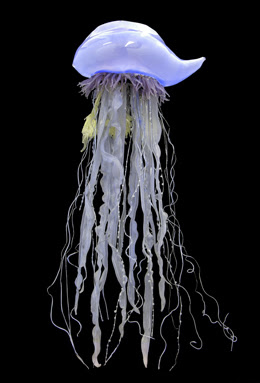Saw this amazing chair on Joanne Caseys blog. It has everything a Victorian gentleman needs for a quiet evening at home. Reminds me of the amazing Victorian Wooten desks.
A Brief Curriculum Vitae
Pavel Brázda was born on 21 August 1926 in Brno. Here, in 1943, he founded his style called “hominism” – art about people and for the people. After studying two semesters of Philosophy and History of Art at the Masaryk University in Brno and another two semesters at the Academy of Arts, Architecture and Design in Prague, from which he was expelled for lack of interest in his studies, he entered the third semester at the Academy of Fine Arts in Prague in 1947. In 1948, he met painter Věra Nováková here, the woman who was to become his wife and who he lives with up until today. At the beginning of 1949, they were both expelled from all studies for political reasons and he was sent to work as an apprentice house painter. Between 1950 and 1952, the two of them, already married, studied and graduated from the Higher Professional School of Applied Art in Prague, a high school with morning and evening classes. They were then both allowed to make a living as decorative artists, working in the area of applied arts and crafts. They were never members of the Czechoslovak, later Czech Union of Visual Artists and never even applied for a membership. In 1959, their daughter Kateřina was born. For 10 years starting with 1977, Brázda worked as a stoker in a coal boiler room, he retired in 1987. He didn’t begin exhibiting his art as a regular, acknowledged artist until the 1990’s. The first common exhibition with Věra Nováková was organized in the Homes for Women Prague Cultural Centre in
1992 and it was accompanied by a voluminous catalogue from the Revolver Revue edition. In the same year,
Pavel Brázda became the first visual artist to receive the Revolver Revue Prize for the year 1991.
Exhibitions in Prague galleries, in the Czech Republic and abroad followed and at the end of the nineties,
he participated in group shows at the National Gallery.
The first common exhibition with Věra Nováková was organized in the Homes for Women Prague Cultural Centre in
1992 and it was accompanied by a voluminous catalogue from the Revolver Revue edition. In the same year,
Pavel Brázda became the first visual artist to receive the Revolver Revue Prize for the year 1991.
Exhibitions in Prague galleries, in the Czech Republic and abroad followed and at the end of the nineties,
he participated in group shows at the National Gallery.
 A selection of Brázda’s paintings has been part of
the permanent exhibition of Czech modern art at the National Gallery (the Veletržní Palace) since 2000. In
2006 – 2007, a retrospective exhibition of Brázda’s art was organized at the National Gallery and prolonged
to half a year. In 2007, a large artist monograph called “Brázda” was published by the Argo publishing
house; in 2008, a smaller artist monograph on the occasion of Brázda’s Paris exhibition called “Brázda – The
Monster Awaits, the Monster has Time” was published in the Respekt edition with texts in Czech, French and
English. Several television and radio documentaries have been made about Brázda’s life and art. In 2007, he
received the “Personality of the Year” Art Historians’ Prize, on 28 October 2008, Brázda was awarded the
state Medal of Merit for Art. Between 2009 and 2011, excerpts from his “Human Comedy” were exhibited every
year, mostly in the 5th Floor Gallery and the Litera Gallery in Prague. In 2012 – 2013, a solo show of his
art from the years 1949 to 2012 was organized in the Moscow Proun Gallery. Most of the paintings exhibited
in the Municipal House come from 2012. (courtesy artists website)
A selection of Brázda’s paintings has been part of
the permanent exhibition of Czech modern art at the National Gallery (the Veletržní Palace) since 2000. In
2006 – 2007, a retrospective exhibition of Brázda’s art was organized at the National Gallery and prolonged
to half a year. In 2007, a large artist monograph called “Brázda” was published by the Argo publishing
house; in 2008, a smaller artist monograph on the occasion of Brázda’s Paris exhibition called “Brázda – The
Monster Awaits, the Monster has Time” was published in the Respekt edition with texts in Czech, French and
English. Several television and radio documentaries have been made about Brázda’s life and art. In 2007, he
received the “Personality of the Year” Art Historians’ Prize, on 28 October 2008, Brázda was awarded the
state Medal of Merit for Art. Between 2009 and 2011, excerpts from his “Human Comedy” were exhibited every
year, mostly in the 5th Floor Gallery and the Litera Gallery in Prague. In 2012 – 2013, a solo show of his
art from the years 1949 to 2012 was organized in the Moscow Proun Gallery. Most of the paintings exhibited
in the Municipal House come from 2012. (courtesy artists website)













































